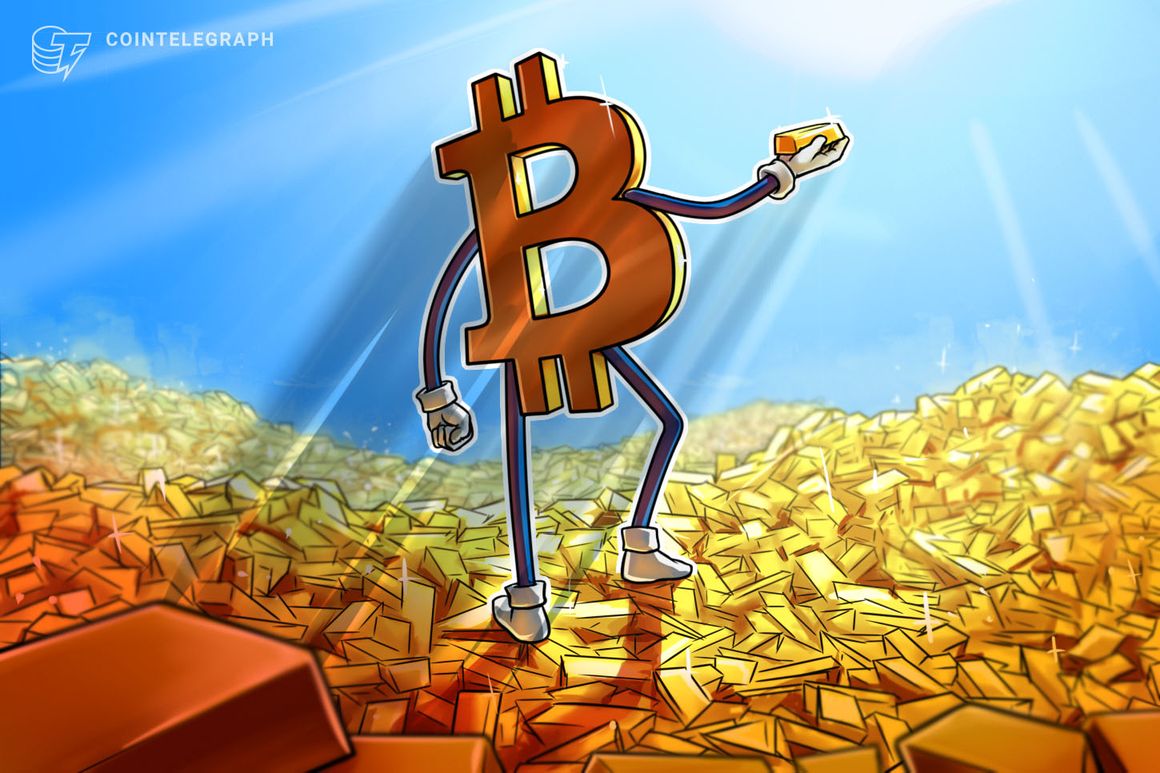The connection between bitcoin and gold goes back to the origin of bitcoin. While it wasn’t mentioned in the Bitcoin white paper, Satoshi Nakamoto actually referred to the scarcity of gold in a Bitcointalk forum post when introducing the first version of Bitcoin (BTC) in 2009. This was to stress the importance of the limited supply of 21 million coins.
Bitcoin’s market capitalization is frequently matched against gold, which has a total value of $12.8 trillion, and many cryptocurrency pundits often point to the approval of a gold exchange-traded fund (ETF) in 2004 as a catalyst for the asset’s price rally.
Bitcoin is currently facing resistance at the $30,000 mark, and its inability to clear this level may lie in how institutional investors perceive the comparison of BTC and gold as stores of value.
Bitcoin’s current market capitalization of $570 billion eclipses traditional giants such as Visa, Taiwan Semiconductor, and JPMorgan Chase. However, it is still 55% behind silver and significantly behind gold, the world’s most important tradable asset.
This raises an important question: how closely related are the prices of these two assets to each other? In simpler terms, do their prices actually have a noticeable relationship?

The explanation becomes clear when considering Bitcoin’s increased volatility. For example, a 30-day correlation index can go from positive to negative in a matter of weeks. This lack of consistent price communication can be attributed to Bitcoin’s relatively modest adoption and the uncertainty investors are still grappling with regarding its potential and practical applications.
Investors and analysts continue to debate whether Bitcoin’s decentralized nature and limited supply validate its role as a financial reserve, while others argue that its price instability hinders its viability as a medium of exchange. However, there is no impediment to evaluating the market cap of Bitcoin along with other major global stocks and commodities.

Examining the Bitcoin market cap compared to gold reveals an interesting trend, highlighting the resistance levels at 10% and 4.5%, which could explain the $30k resistance.
Bitcoin Investment Products vs Gold ETFs
According to CryptoCompare, Bitcoin-related investment vehicles raised a total of $24 billion in July. This includes products such as the Grayscale Bitcoin Trust and exchange-traded notes from various providers. This translates to about 4.2% of Bitcoin’s current market cap of $570 billion. Even taking into account the most generous estimate of 1.66 million BTC It said owned by institutional investors, that’s still only 8.5% of the total market cap.
By comparison, gold-backed ETF products were valued at $215 billion in June, just 1.7% of gold’s market cap. However, to get a fair assessment against Bitcoin, it is worth considering physical gold holdings, which are favored by governments and banks. At the same time, regulations often push fund managers towards BTC-listed products, causing this discrepancy.
For example, central banks and the International Monetary Fund hold 46,603 tons of gold, which is equivalent to $2.84 trillion. Private investments in bullion and coins add 45,000 tons, valued at an additional $2.74 trillion. In total, investors own $5.8 trillion in gold, which is 45.2% of the market cap.
This analysis indicates that the adoption of Bitcoin as a store of value among institutional investors is about 81% smaller than that of gold. This partly explains why Bitcoin’s $570 billion market cap is 95.5% less than gold, the dominant precious metal.
Related: PayPal To Roll Out Cryptocurrencies Hub For Select Users
Bitcoin can succeed regardless of its use as a store of value
Bitcoin’s market capitalization could potentially quintuple, to $2.9 trillion, even without full adoption as an institutional store of value. This increase may result from the growing demand for decentralized digital commerce. With traditional financial systems facing hurdles, Bitcoin’s role as a censorship-resistant global transaction medium is gaining prominence.
Moreover, its increasing integration into e-commerce and online marketplaces could inflate the volume of transactions. As individuals seek alternatives to traditional payments, the scarcity and usefulness of Bitcoin may create a self-reinforcing cycle of value. This distinctive combination of factors suggests that bitcoin’s price rise may not hinge exclusively on institutional adoption as a store of value.
This article is for general information purposes and is not intended and should not be considered legal or investment advice. The views, ideas and opinions expressed herein are those of the author alone and do not necessarily reflect or represent the views and opinions of Cointelegraph.
